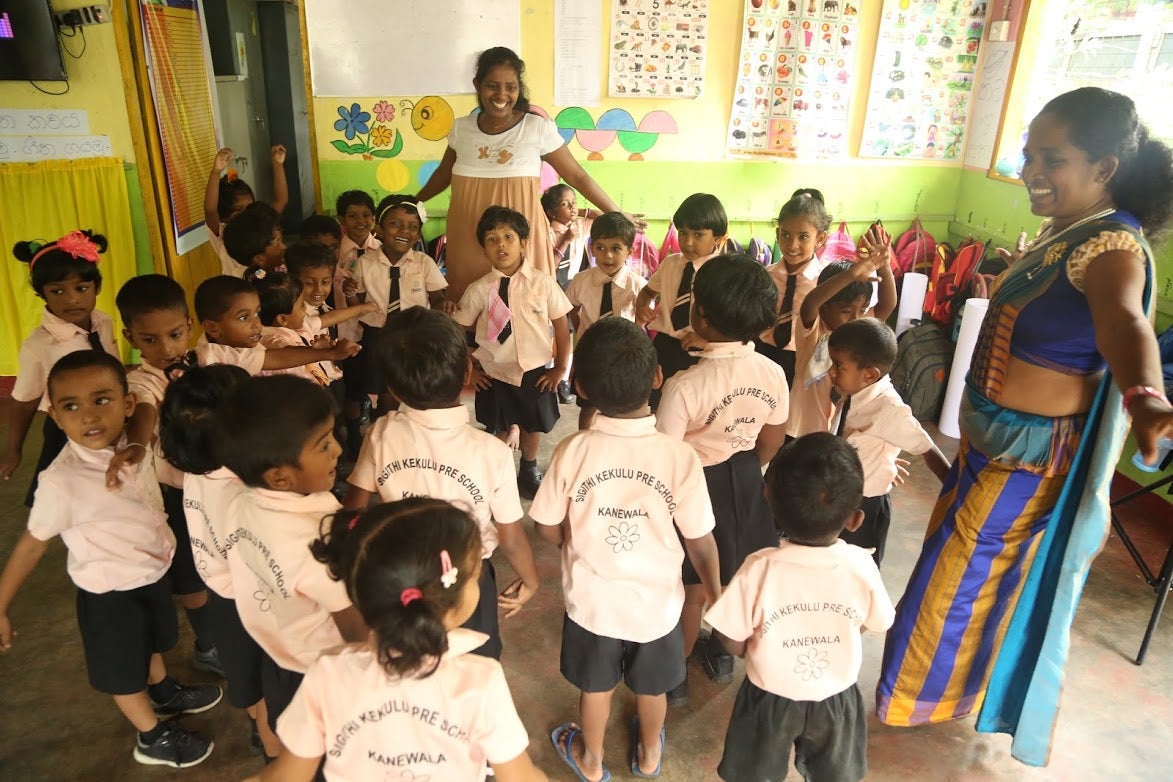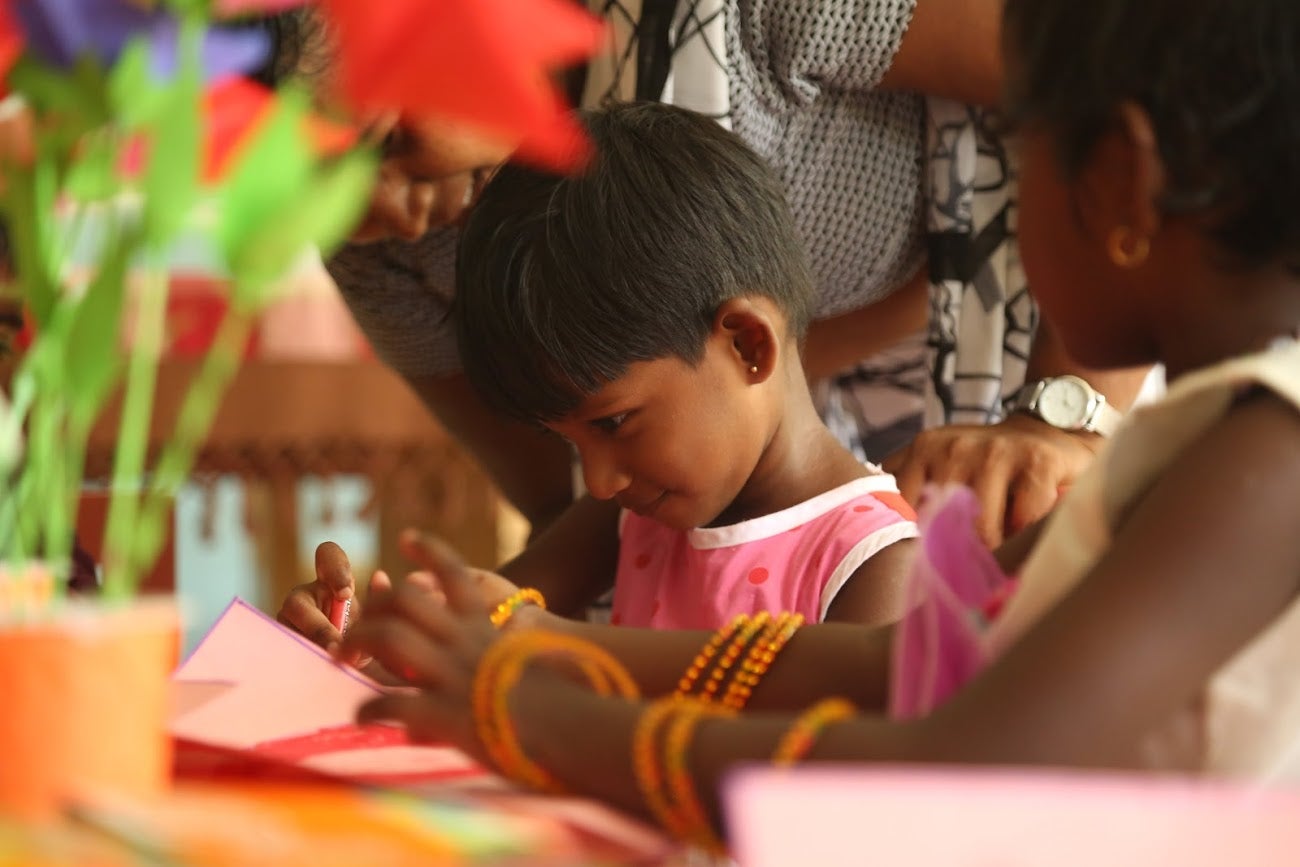 Center based education fosters group learning and socialization
Center based education fosters group learning and socialization
As an early childhood education specialist and as a mother of two children, I know how difficult the COVID-19 pandemic has been for parents who are juggling work and family obligations. The lack of affordable and reliable childcare options has left many parents scrambling to find makeshift solutions and has brought the issue of childcare sharply into focus.
Here in Sri Lanka, the struggle has been most serious for daily wage earners. Schools and day care centers have been closed for most part of the year. For some, this has meant leaving young children alone at home, or in the care of older siblings. For others, it has meant forgoing their daily income.
The pandemic is temporary, but the challenges of parenthood are not. In fact, it is likely that some of these challenges will be exacerbated in the post pandemic world, as countries and families struggle to rebuild fallen economies. Though Sri Lanka provides free universal education from primary school onwards, the state does not provide universal education or childcare support to children below the age of 5.
In a fast-changing world, this system is becoming increasingly unsustainable. I see some key issues and challenges surrounding the provision of childcare services in Sri Lanka, and a few simple questions can help put this issue into perspective.
With diminishing family support, home based care is becoming difficult.

Is home based childcare still a feasible option?
Culturally, many Sri Lankans believe that young children do best with their families, and research has shown that there is some truth to this notion. Growing up with family allows children to develop bonds and secure attachments and helps foster early emotional development. The quality of care however depends on the responsiveness of the caregiver and on the nature of the environment, and not everyone has the resources to create a nurturing and stimulating home environment. The fact that in 2016, 60 percent of Sri Lankan children between 2-4 years had less than five books at home is indicative of this point.
Extended family support is common in the country, and grandparents have traditionally played a big role in childcare. This too is changing. Sri Lanka has the fastest ageing population in South Asia, and this coupled with the increase in non-communicable diseases has meant that grandparents are older and less able to care for grandchildren. Dependency ratios have also changed, leaving parents responsible for the care of young children as well as elderly family members. With diminishing family support, home based care is becoming difficult.
Those without family support sometimes make informal childcare arrangements with neighbors and friends, often compromising the safety and welfare of the child. Many children grow up in unsafe and unsuitable environments and carry the consequences of this early neglect into adulthood.

Can parents afford to pay for childcare?
Affordability is a challenge for many parents. Many families survive on limited and unstable incomes, and cannot afford the added expense of childcare, particularly for multiple children. In 2016, 36 percent of children lived on less than LKR 278 ($1.5) per day, and 74 percent lived on less than LKR 506 ($2.7) per day. With much of the family income going towards food, rent and other necessities there is little left to invest in childcare.
Are there other factors that limit access?
For some parents, the lack of flexibility in childcare settings is also a deterrent. Most privately run day care centers operate from 9 – 5 and do not accommodate different work schedules. As the name suggests, day care centers do not cater to parents who work night shifts. When children attend preschool and day care in different locations parents have to leave work midday for pick up and drop off. For many, the inconvenience and added expense of this commute is not negligible.
Though day care centers have been mushrooming in Sri Lanka, many lack basic infrastructure and adequate facilities.
Is employer-supported childcare available in Sri Lanka?
Employer-supported childcare is increasing, and various models, ranging from in-house childcare centers to consortium models have emerged in private and government offices. In the estate sector, Child Development Centers - which are among the only preschool – day care integrated models in Sri Lanka – provide childcare support and early education. This leaves the 57.4 percent (2019) of employees working in the informal sector who can’t access employer-supported childcare and need other avenues of support.
How good is the quality of childcare?
Though day care centers have been mushrooming all over the country, many lack basic infrastructure and have inadequate facilities and teaching-learning material. Some are overcrowded and understaffed. The capacity of child caregivers is also problematic. A 2010 survey found that 18 percent of child caregivers surveyed did not even have a General Certificate of Education, Ordinary Level qualification, and 43 percent had not received any kind of training. Though centers are required to provide holistic care and stimulation, most provide little more than childminding. This is not to say that good ECCE centers do not exist in Sri Lanka, only that it often comes at a high cost and is thus out of reach for many parents.
How is Sri Lanka responding to these issues?
Sri Lanka’s investments in ECCE have focused primarily on preschools (ECD centers). In recent years, there has been significant progress in increasing access to preschool education. The World Bank funded Early Childhood Development Project has made a major contribution to the sector through the construction of new centers, facility improvement, teacher training, the provision of teaching-learning material and other measures to improve the quality of preschool education.
While this is a much-needed step in the right direction, we may now need to move towards a more holistic approach to early years’ services, to support parents, and to accommodate the care and education needs of children in the 0 – 5 age group.
As a start, more preschools/ECD centers could be developed to include affordable day care services for children, with facility development and capacity building support for the ECD teachers and childcare givers. This is in line with the government’s mandate. The added advantage to this approach is that it will open up opportunities for more mothers, like myself, and caregivers, to participate in the labor force and contribute to the country’s economic development.



Join the Conversation